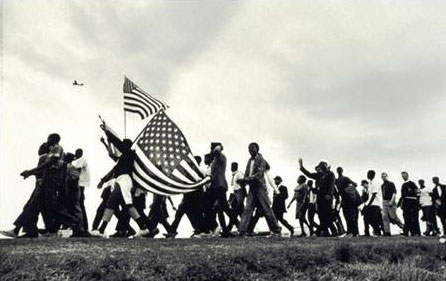
Back to Spring 2006 English Syllabus
Essay 2 - American Legacies
 |
Mark
Herron, Marchers from Selma to Montgomery, March 1, 1965 |
Your second essay will grow out of the work that you are doing for Project 3. You should be able to use much of the same material; however, now you will further develop your topic and construct a formal, argumentative essay. Your web project asked you to inform your viewer about your topic in an interesting, visual format. You will now shift your informative content to accommodate an argumentative purpose.
For your
second essay consider the historical legacy of your topic for Project
3, that is, how your topic changed American history, or what effect your
topic had on the larger concerns of the late 20th century. Looking back
on your topic, how would you assess the difference it made in America’s
continuing story?
|
Consider the following outline as a general strategy for your paper:
Carefully include in-text parenthetical citations for any work that you either quote directly or paraphrase. See the Quoting Smoothly and Paraphrasing links on our home page. Your parenthetical citations should lead your reader to the first word in the Works Cited entry. |
Checklist:
- Paper typed, double spaced, in standard 12 point font, stapled in the left-hand corner
- 750 - 1000 words in length
- Original title that catches the reader’s interest
- Introduction with clear thesis statement
- Paragraphs that support your thesis
- A memorable conclusion
- In-text parenthetical citations for material paraphrased or quoted directly
- A separate Works Cited page acknowledging sources for text and images in MLA format
- Include material from at least one book
- Include material from at least one scholarly article found in one of the library databases
- 2 images as illustration for your argument
Essay
due: Tuesday
May 2, before 5:00.
|
Put your essays in my hand or in my mailbox in the Writing Center, Room 217.
Last day to turn in essays, with a letter grade penalty: Thursday, May 4, before 5:00.
I remind you of the following English Department policy: You must turn in all written work in order to pass the class.
Reproduction of Marchers from Selma to Montgomery:
Herron, Mark. Marchers from Selma to Montgomery. March 21, 1965. Online Image. The Lyndon Baines Johnson Library and Museum. 31 March 2005. <http://www.lbjlib.utexas.edu/johnson/Press.hom/weshallovercome.shtm>.
